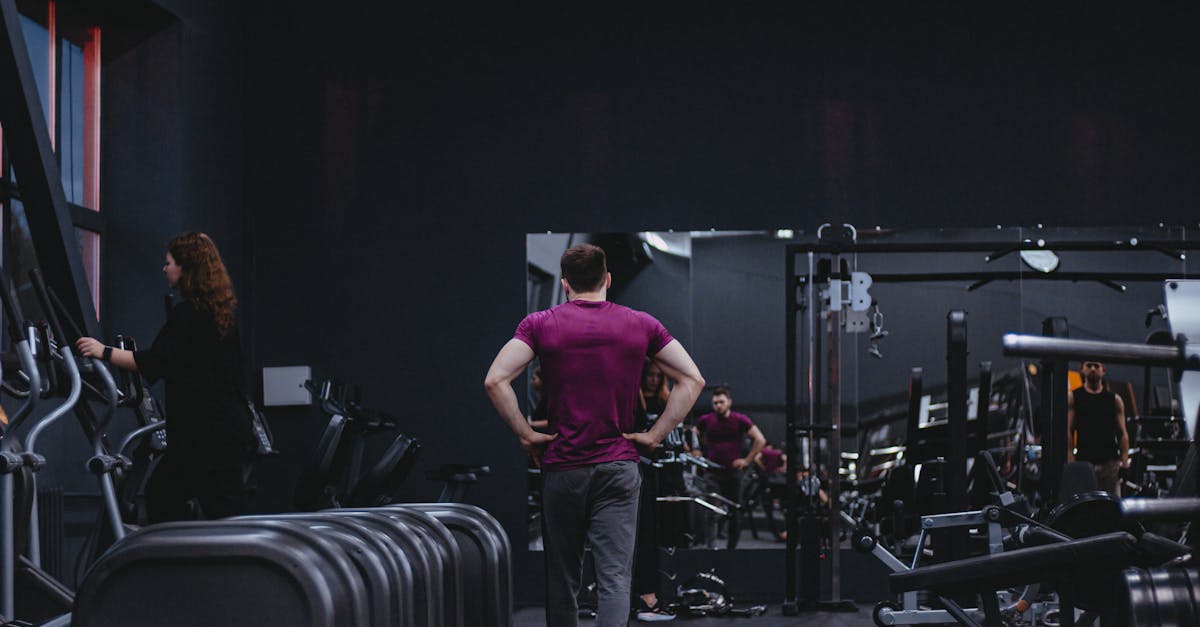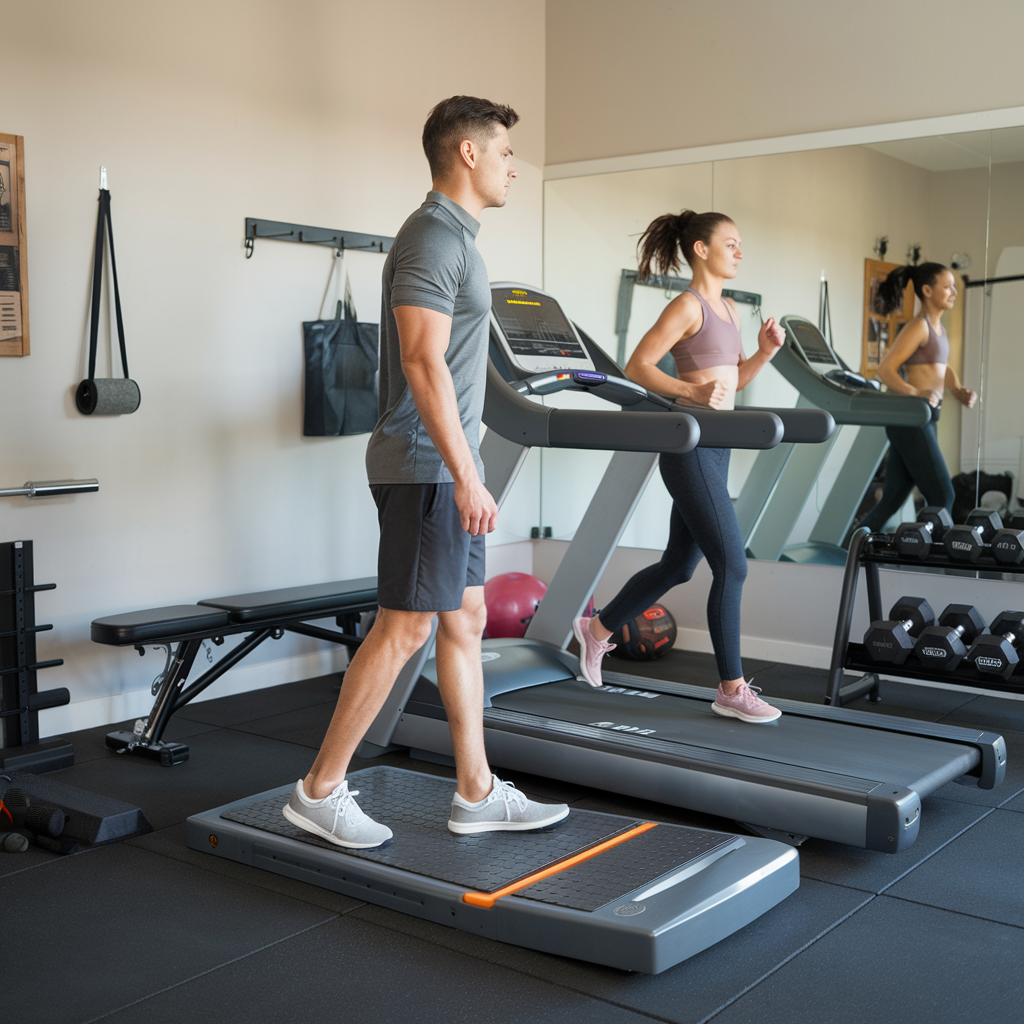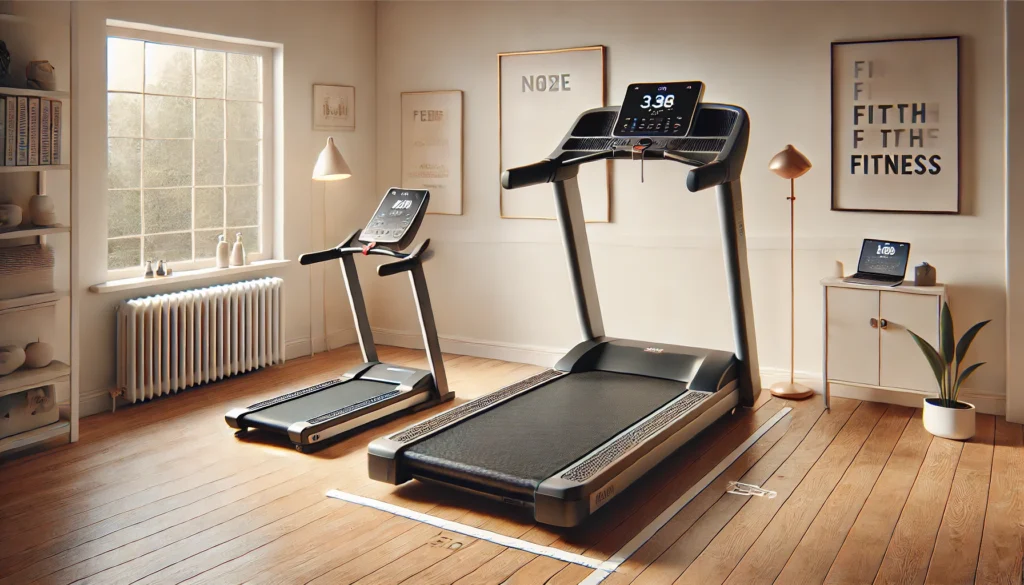Physical Address
304 North Cardinal St.
Dorchester Center, MA 02124
Physical Address
304 North Cardinal St.
Dorchester Center, MA 02124

If you're looking to stay active at home without disturbing the peace, you might be wondering about the noise levels of walking pads compared to traditional treadmills. These compact fitness machines have gained popularity for their convenience and versatility, making them an attractive option for those who want to exercise while working or watching TV. But just how quiet are they?
Walking pads ar
If you’re looking to stay active at home without disturbing the peace, you might be wondering about the noise levels of walking pads compared to traditional treadmills. These compact fitness machines have gained popularity for their convenience and versatility, making them an attractive option for those who want to exercise while working or watching TV. But just how quiet are they?
Walking pads are designed with noise reduction in mind, often featuring innovative technology to minimize sound. This makes them an appealing choice for apartment dwellers or anyone who prefers a quieter workout environment. In this article, you’ll discover the key differences in noise levels between walking pads and treadmills, helping you make an informed decision for your fitness routine.

Walking pads and treadmills serve the same purpose of enhancing your fitness routine but differ significantly in design and functionality. Understanding these differences can help you make an informed decision about which one aligns with your needs.
Walking pads feature a compact and lightweight design, making them ideal for small spaces. They often have a slim profile and can easily fit under a desk or in a corner when not in use. Treadmills, on the other hand, are bulkier and come with more extensive structures that may require dedicated space in your home.
Walking pads are specifically engineered for quiet operation. Most models utilize advanced technology that minimizes noise, making them perfect for use in shared living environments or when working from home. Treadmills tend to produce more sound due to their heavy motors and larger running belts, which may disrupt others in your vicinity.
Walking pads offer a straightforward interface with limited speed options, usually focusing on walking rather than running. This simplicity caters to casual users or those engaging in low-impact exercises. Treadmills, in contrast, provide a range of speed settings and incline adjustments, allowing for more varied workouts, including running and interval training.
Both walking pads and treadmills provide calorie-tracking and workout monitoring features. However, walking pads emphasize convenience with features designed for multi-tasking, such as compatibility with desks for working while walking. Treadmills offer more advanced workout programs and training features that cater to serious fitness enthusiasts.
When considering your budget, keep in mind that walking pads are generally more affordable than traditional treadmills. Their compact design and functionality make them a cost-effective solution for individuals focused on walking or light exercise. Treadmills tend to be a greater investment with a broader range of features and capabilities.
By understanding these aspects of walking pads and treadmills, you can better assess which equipment suits your lifestyle and exercise goals.
When considering exercise equipment for home use, noise levels are a crucial factor. Understanding how walking pads and treadmills compare in terms of sound can help you make an informed choice.
To accurately assess the noise produced by walking pads and treadmills, standardized sound measurement techniques are employed. Sound levels are typically measured in decibels (dB) while machines operate at various speeds. Using a calibrated sound level meter positioned at a consistent distance, testers evaluate the noise generated during different types of activities, such as walking or running. This approach provides a clear representation of each device’s sound profile, allowing for an objective comparison.
Several factors influence the noise levels emitted by walking pads and treadmills. Key considerations include:
| Factor | Walking Pads | Treadmills |
|---|---|---|
| Motor Size | Smaller and quieter | Larger and louder |
| Deck Design | Shock-absorbing materials | Heavier components |
| Speed Settings | Limited to walking speeds | Variety of speed options |
| Weight | Lightweight | Bulkier structure |
| Noise Dampening | Engineered for silence | Less focus on noise reduction |
The motor size directly impacts how much noise the machine generates during operation. Walking pads typically feature smaller motors that run more quietly than the larger motors found in treadmills. Deck design plays a significant role, with walking pads often using materials designed to absorb impact and minimize sound. Speed settings also contribute—since walking pads are limited to slower speeds, they tend to produce less noise than treadmills that allow for varied running speeds. Additionally, the overall weight of the machine can affect sound transfer, with heavier treadmills generating more noise due to vibrations. Finally, the engineering efforts for noise dampening are more pronounced in walking pads, which prioritize quieter experiences, especially in living spaces.

Walking pads offer a range of advantages, making them an appealing choice for many fitness enthusiasts. From their space-saving design to their ability to multitask, walking pads seamlessly integrate into various lifestyles.
Walking pads are designed to be lightweight and space-efficient. Their slim profiles allow you to place them in tight spaces such as under desks or in small apartments. Many models can be easily folded for convenient storage, freeing up valuable floor space when not in use. This compact design is particularly beneficial for urban dwellers or anyone looking to maintain an active lifestyle without sacrificing living space.
Walking pads are highly versatile, catering to different fitness needs and environments. You can use them while performing other tasks such as working on a computer, watching television, or even reading a book. This multitasking capability encourages you to stay active throughout the day, turning sedentary moments into productive exercise sessions. Whether you’re casually strolling for relaxation or engaging in light cardio, walking pads allow you to adjust your activity level to fit your schedule and preferences.
Treadmills offer a variety of benefits that cater to serious fitness enthusiasts. Their advanced features and robust design provide an overall exceptional workout experience.
Treadmills come equipped with advanced features that enhance your workout routine. You can adjust speed settings to match your fitness level and goals. Many models also include incline options which simulate walking or running uphill to increase intensity. Built-in workout programs offer structured challenges and target specific fitness objectives. Additionally, some treadmills feature heart rate monitors and connectivity with fitness apps to track your progress more effectively. These features make it easier to customize your workout and keep you motivated.
Treadmills are typically built with durable materials designed to withstand rigorous usage. Their sturdy frames and high-quality components contribute to their longevity. You can rely on a treadmill for consistent performance over time, making it a solid investment in your fitness journey. Many models also include warranties that reflect their robust construction and durability. This peace of mind allows you to focus on your workouts without worrying about potential breakdowns or maintenance issues.
When considering noise levels, walking pads generally outperform traditional treadmills. This difference impacts your home environment, especially in shared living spaces.
Standardized sound measurements reveal that walking pads produce significantly lower decibel levels compared to treadmills. In a controlled environment where both machines were tested, the following results were noted:
| Equipment | Decibels (dB) at Walking Speed | Decibels (dB) at Running Speed |
|---|---|---|
| Walking Pad | 50 dB | N/A |
| Treadmill | 70 dB | 85 dB |
These results illustrate that walking pads operate quietly during use, making them more suitable for apartment living or for users who prefer a peaceful workout. The small motors in walking pads create less noise, while the bulkier motors and heavier deck components of treadmills contribute to their higher sound levels.
Many users report that walking pads provide a peaceful exercise environment. You can walk while watching your favorite shows or even attend virtual meetings without distractions caused by loud equipment. Users often comment on the quiet operation of these devices, enhancing their ability to multitask effectively.
In contrast, treadmill users frequently mention the noise generated, particularly at higher speeds. This noise can disrupt others in the household or even drown out music or television. For those living in close quarters or shared spaces, the loud operation of treadmills can be a significant drawback.
Choosing a quieter option like a walking pad can greatly improve your home workout experience, allowing you to maintain a productive and undisturbed environment.
Choosing between a walking pad and a treadmill ultimately depends on your lifestyle and preferences. If you value a quieter workout experience and need a space-saving option, walking pads are the clear winner. Their design focuses on noise reduction, making them ideal for shared living spaces or when you’re multitasking.
On the other hand, if you’re looking for advanced features and a more intense workout, treadmills might be the way to go despite their noise levels. Consider your exercise goals and environment to make the best choice for your fitness journey. With the right equipment, you can enjoy a productive workout routine without disturbing others.